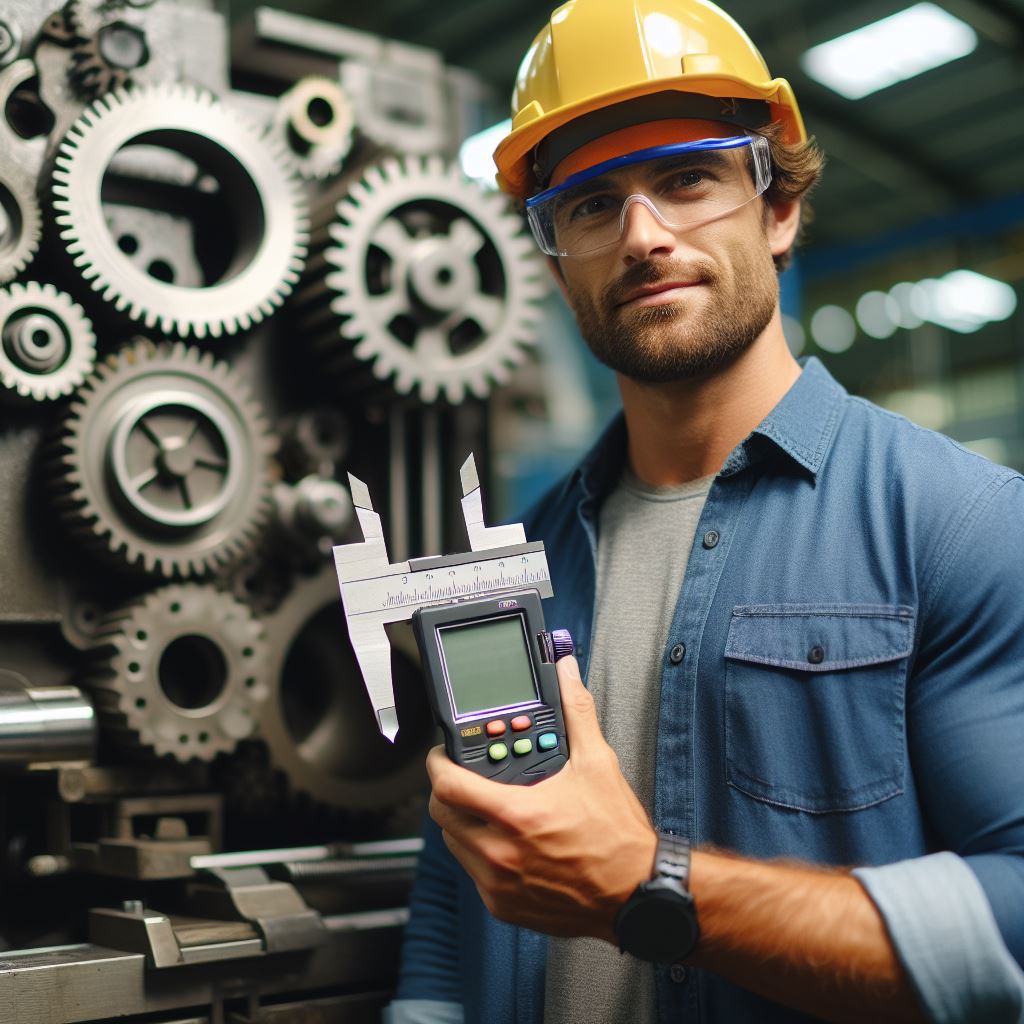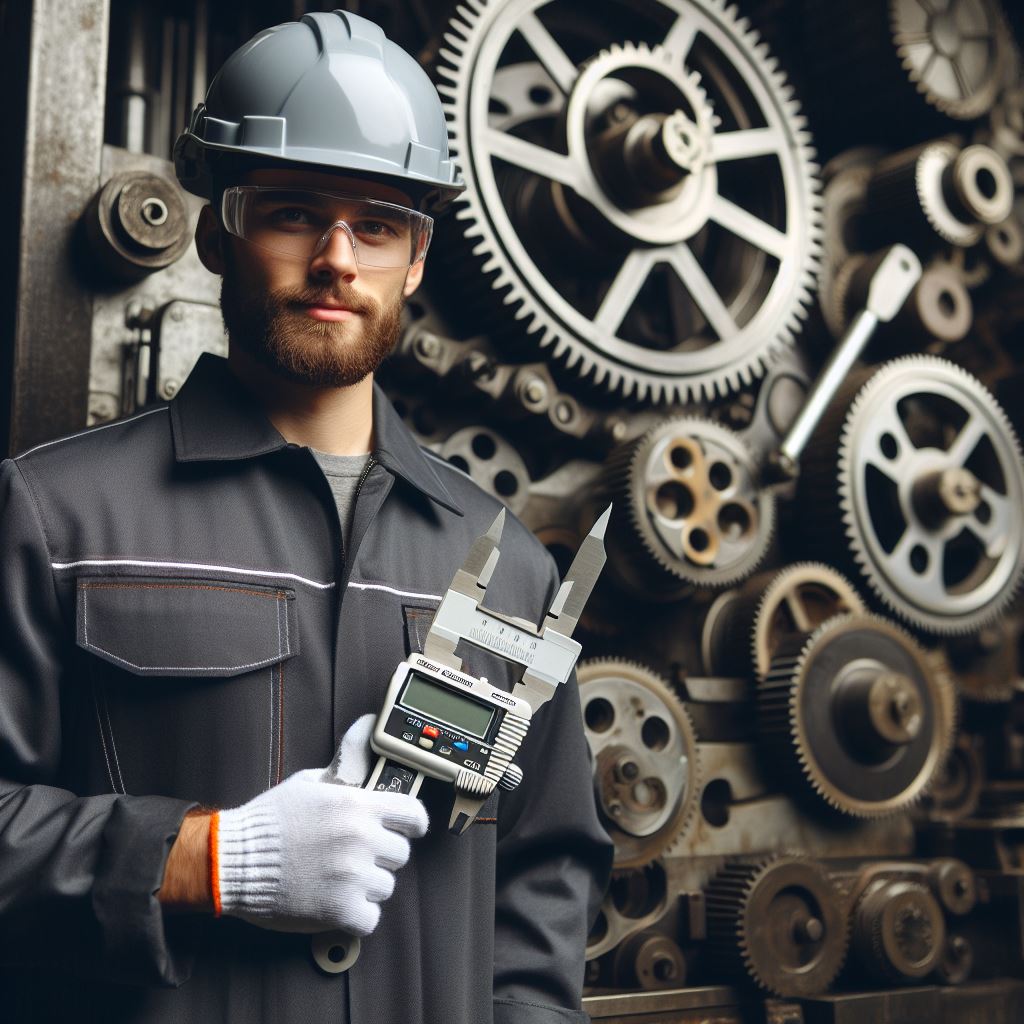Introduction
Engineering plays a pivotal role in New Zealand, propelling progress and economic growth across sectors.
It’s indispensable for infrastructure development, technological advancements, and addressing various challenges.
In recent years, mechanical engineering in NZ has undergone remarkable advancements, revolutionizing the industry.
One key innovation is the adoption of 3D printing technology, enabling engineers to create intricate prototypes and parts swiftly and cost-effectively.
This innovation has accelerated product development and prototyping processes, fostering rapid design iteration.
Renewable energy utilization is another significant innovation driving NZ’s mechanical engineering landscape.
Engineers are spearheading the development of efficient and sustainable energy solutions, from wind turbines to solar panels, facilitating a greener future.
Automation and robotics have also transformed mechanical engineering in NZ, enhancing efficiency and productivity across industries.
Robots perform complex tasks, augmenting human labor and ensuring safety in hazardous environments.
Furthermore, artificial intelligence (AI) integration is reshaping mechanical engineering processes, enabling data analysis, design optimization, and performance enhancement.
AI applications, from self-driving vehicles to smart manufacturing, are revolutionizing problem-solving approaches.
Overall, NZ’s mechanical engineering sector is witnessing a wave of innovations, driving progress, efficiency, and sustainability.
Embracing these advancements promises a bright future for the industry as engineers continue pushing boundaries.
Background on NZ Mechanical Engineering
Overview of the mechanical engineering industry in New Zealand
Mechanical engineering plays a vital role in New Zealand’s development and growth.
It is a diverse industry that encompasses a wide range of activities, including designing, manufacturing, and maintaining machinery and mechanical systems.
The industry covers various sectors, such as energy, manufacturing, construction, and transportation.
Mechanical engineers in New Zealand work on projects that involve everything from renewable energy systems to innovative transportation solutions.
The mechanical engineering industry in New Zealand is known for its high standards and innovative approach.
It strives to find efficient and sustainable ways to tackle complex engineering challenges while adhering to strict safety and environmental regulations.
Statistics and key figures illustrating the significance of engineering in the country
To understand the importance of mechanical engineering in New Zealand, let’s take a look at some key statistics and figures:
- New Zealand has over 9,000 mechanical engineers actively working in various sectors.
- The engineering sector contributes approximately NZD 17 billion to the country’s economy annually.
- Mechanical engineering services make up a significant portion of this contribution.
- Over the past decade, there has been steady growth in the number of mechanical engineering jobs in New Zealand.
- Mechanical engineers are crucial for the development and maintenance of the country’s infrastructure, including transportation networks and energy systems.
- With the nation’s focus on renewable energy, the demand for mechanical engineers in the energy sector is rapidly increasing.
- Many engineering graduates find employment opportunities in New Zealand, with the industry actively recruiting skilled professionals.
- Collaboration between academia and industry is strong, ensuring that engineering education aligns with industry needs.
- New Zealand’s geographically diverse landscape provides unique challenges and opportunities for mechanical engineers.
These statistics and figures highlight the significant role played by mechanical engineering in New Zealand’s economy and overall development.
The industry’s contributions go beyond economic benefits, as it also plays a key role in advancing technology and sustainability in the country.
Mechanical engineering innovation in New Zealand is driven by a dynamic combination of research, technological advancements, and industry collaboration.
From designing cutting-edge machinery to implementing sustainable practices, mechanical engineers are shaping the future of several key industries in the country.
In fact, the mechanical engineering industry in New Zealand is thriving and continues to grow in significance.
The sector’s impact can be seen in various sectors, with its contributions vital to the nation’s economy and infrastructure development.
With ongoing innovation and collaboration, mechanical engineering will remain at the forefront of shaping the future of New Zealand.
Read: NZ Mech Engineering: Career Pathways
Sustainable Energy Innovations
The development and advancements of renewable energy technologies
Integration of wind turbines and solar panels in mechanical engineering projects
The incorporation of wind turbines and solar panels into mechanical engineering projects is revolutionizing the sustainable energy sector in New Zealand.
These renewable energy sources not only reduce carbon emissions but also provide a constant power supply.
Introduction of hydroelectric power systems and their impact on NZ engineering
The introduction of hydroelectric power systems has significantly impacted the field of mechanical engineering in New Zealand.
These systems harness the power of water to generate electricity, making it a reliable and clean source of energy.
Case studies highlighting successful sustainable energy projects in New Zealand
New Zealand has witnessed remarkable sustainable energy projects that have made a significant impact on the country’s engineering landscape.
Let’s explore a few noteworthy case studies:
- Te Apiti Wind Farm: The Te Apiti Wind Farm, located in Manawatu Gorge, is one of New Zealand’s largest wind energy projects.
It consists of 55 wind turbines that have a total capacity of 90 megawatts, providing sustainable energy to approximately 45,000 households. - Zephyr Power Wind Farms: Zephyr Power Wind Farms, situated in the southern part of New Zealand, utilize advanced wind turbine technology to generate a substantial amount of renewable energy.
These wind farms play a crucial role in meeting the country’s energy demands. - Māui A Platform: The Māui A Platform is a deepwater production station located off the Taranaki coast. It plays a vital role in extracting natural gas, which is essential for meeting New Zealand’s energy requirements.
The platform’s innovative design and engineering have contributed to the country’s sustainable energy efforts.
New Zealand’s focus on sustainable energy innovations in the field of mechanical engineering is evident through these successful projects.
By utilizing renewable energy sources and advanced technologies, the country is achieving its energy goals while reducing environmental impact.
Read: Women in Mech Engineering in NZ
Automation and Robotics
The integration of automation and robotics in NZ mechanical engineering
In recent years, automation and robotics have become integral parts of the mechanical engineering industry in New Zealand.
Through the use of advanced technologies, these innovations have revolutionized the way processes are carried out, resulting in increased efficiency and productivity.
The integration of automation and robotics in NZ mechanical engineering has provided numerous benefits to various industries, including the manufacturing sector, agriculture and food processing industry, as well as transportation and logistics.
Personalized Career Consulting
Unlock your potential with expert career advice tailored to your goals. Get personalized guidance and actionable steps toward your dream career in New Zealand.
Get StartedDetailed examples of industries utilizing automation and robotics technologies
Manufacturing sector
The manufacturing sector in New Zealand has significantly benefited from the implementation of automation and robotics technologies.
With the use of automated systems, manufacturers can streamline their production lines, resulting in faster and more accurate assembly of products.
Robots are now capable of handling repetitive and dangerous tasks, ensuring the safety of workers.
Moreover, these technologies have also enabled manufacturers to achieve higher levels of precision and quality control.
One notable example is the implementation of robotic arms in automotive manufacturing.
These robotic arms can efficiently perform tasks such as welding, painting, and assembly, leading to increased production rates and improved product quality.
Agriculture and food processing industry
The agriculture and food processing industry in New Zealand has embraced automation and robotics technologies to improve efficiency and address labor shortages.
Robotic systems are now utilized in tasks such as harvesting crops and milking cows in dairy farms.
These technologies not only save time but also reduce the physical strain on workers.
In the food processing industry, automation and robotics have revolutionized the packaging and sorting processes.
Automated systems can accurately package products, ensuring consistency and reducing the risk of errors.
Additionally, robotic arms can perform delicate tasks, such as handling fragile food items, with precision and care.
Transportation and logistics
The integration of automation and robotics in the transportation and logistics industry has led to significant improvements in efficiency and cost-effectiveness.
Automated warehouse systems can efficiently sort and organize goods, leading to faster order fulfilment and reduced human errors.
Robotics technologies have also improved the loading and unloading processes, increasing productivity and minimizing damage to goods.
In addition, autonomous vehicles have the potential to revolutionize the transportation industry in New Zealand.
These vehicles can improve road safety, reduce traffic congestion, and enhance overall transportation efficiency.
In short, the integration of automation and robotics technologies has had a transformative impact on NZ mechanical engineering.
Various industries, including manufacturing, agriculture and food processing, as well as transportation and logistics, have harnessed the power of these innovations to improve efficiency, productivity, and safety.
As technology continues to advance, we can expect further developments in automation and robotics in the future.
Read: Mechanical Engineering Licenses in NZ

Artificial Intelligence in Mechanical Engineering
Overview of the role of artificial intelligence in NZ mechanical engineering
Artificial intelligence (AI) has become a crucial component in the field of mechanical engineering in New Zealand.
Through the application of AI, engineers are able to enhance their design, manufacturing, and maintenance processes.
The benefits and applications of AI in the field
Predictive maintenance and fault detection
AI technology enables engineers to implement predictive maintenance strategies.
By analyzing real-time data from mechanical systems, AI algorithms can detect patterns and predict potential failures or malfunctions.
This proactive approach helps prevent costly downtime and improves overall system reliability.
Optimizing energy usage and efficiency
AI algorithms can optimize energy consumption and improve efficiency in mechanical systems.
By analyzing data on energy usage, AI can identify areas where energy is being wasted and suggest improvements to reduce costs and environmental impact.
This is particularly significant in New Zealand, which aims to achieve sustainable energy targets.
Examples of AI-driven mechanical engineering projects in New Zealand
In New Zealand, various AI-driven projects have been implemented to revolutionize mechanical engineering:
- Smart Manufacturing Systems: AI is used to streamline manufacturing processes, improve productivity, and reduce errors.
These systems incorporate robotics, machine learning, and computer vision to automate tasks and improve precision. - Autonomous Vehicles: AI is utilized to develop autonomous vehicles that can navigate various terrains and make real-time decisions.
These vehicles have the potential to revolutionize transportation and improve safety. - Renewable Energy Systems: AI algorithms are used to optimize the performance of renewable energy systems such as wind turbines and solar panels.
This ensures maximum energy generation and efficiency. - Smart Buildings: AI technology is applied in the design and management of smart buildings to optimize energy usage, enhance comfort, and reduce operational costs.
Sensors and AI algorithms work together to regulate temperature, lighting, and ventilation systems.
These examples highlight the significant role of AI in shaping the future of mechanical engineering in New Zealand.
By leveraging AI technology, engineers are able to overcome challenges, improve efficiency, and embrace sustainable practices.
Read: Sustainable Practices in NZ Mech Eng
Emerging Technologies in NZ Mechanical Engineering
Overview of upcoming technologies revolutionizing mechanical engineering
New Zealand’s mechanical engineering industry is being transformed by cutting-edge technologies.
Potential applications of emerging technologies, such as
3D printing
The advent of 3D printing has revolutionized the manufacturing process by enabling the creation of complex structures and prototypes with ease.
Internet of Things (IoT)
The IoT has interconnected physical devices and enabled them to collect and exchange data, allowing for real-time monitoring and optimization of mechanical systems.
Nanotechnology
Nanotechnology involves manipulating materials at the atomic and molecular levels, leading to the development of stronger and more durable mechanical components.
Transform Your Career with a Professional CV and Cover Letter
Stand out to employers with an ATS-optimized resume and tailored cover letter designed to match your dream role. Let us craft your job application materials for success!
Get StartedForeseeable impact and future developments of these technologies in New Zealand
The emergence of 3D printing, IoT, and nanotechnology in New Zealand promises significant advancements.
3D printing enhances production efficiency, reduces costs, and enables customized manufacturing.
IoT optimizes mechanical systems through real-time data analysis and predictive maintenance.
Nanotechnology improves the durability and strength of mechanical components at the nanoscale.
These technologies will profoundly impact various sectors in New Zealand.
In automotive, 3D printing produces lighter vehicles, while IoT enhances connectivity.
Nanotechnology enhances engine performance, contributing to energy efficiency.
In agriculture, 3D printing ensures precision in specialized equipment manufacturing.
IoT monitors crops and livestock, optimizing productivity and resource allocation.
Nanotechnology enhances irrigation and fertilization, promoting sustainable practices.
In healthcare, 3D printing creates customized medical devices.
IoT improves healthcare delivery through remote monitoring and data analysis.
Nanotechnology advances drug delivery systems and biomedical sensors.
Continued research and innovation will drive further advancements.
Boost Your Career with a Standout LinkedIn Profile
Attract recruiters and expand your network with a fully optimized LinkedIn profile tailored to highlight your strengths and professional goals. Let your profile open doors to new opportunities!
Get OptimizedIntegration of these technologies fosters innovation and contributes to sustainability efforts.
Conclusion
This blog post has highlighted some of the key innovations that are shaping the field of mechanical engineering in New Zealand.
We discussed the advancements in renewable energy technologies, such as wind turbines and hydroelectric power generation, which play a crucial role in the country’s commitment to sustainability.
Furthermore, we explored the significance of robotics and automation solutions in improving efficiency and productivity in various industries.
The integration of 3D printing and additive manufacturing techniques has also been instrumental in revolutionizing the design and production processes.
It is essential for mechanical engineers in New Zealand to embrace these technological advancements to stay at the forefront of the industry.
By adopting these innovations, they can contribute to the continued growth and development of their field, ensuring its relevance in the ever-evolving landscape.
The future of mechanical engineering in New Zealand looks promising, with the ongoing advancements and commitment to technological advancements.
With the nation’s focus on sustainability and efficiency, mechanical engineers will continue to play a vital role in driving innovation and progress.
As the demand for skilled professionals in this field increases, embracing these advancements will be key to success and staying ahead of the competition.
In closing, the future of mechanical engineering in New Zealand is bright, and it presents exciting opportunities for those in the field to make a significant impact and contribute to the country’s progress.




